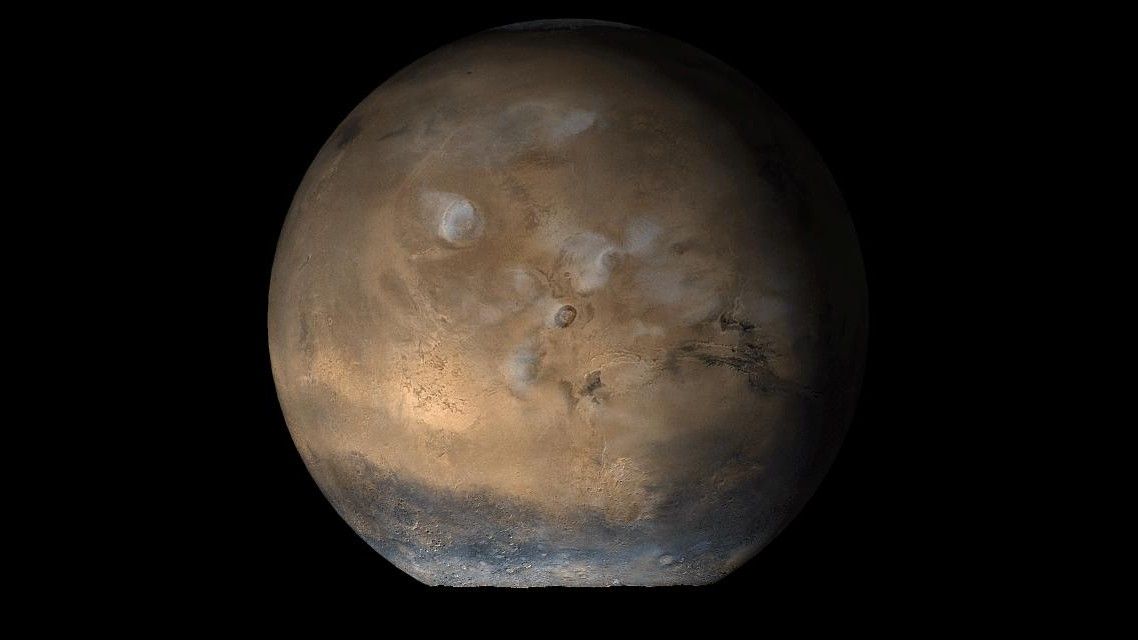
In June 2013, Uttarakhand in northern India received 375% of the rainfall it normally experiences at that stage of monsoon season. Intense rainfall melted portions of Chorabari Glacier, raising the level of the glacier’s basal lake by 7 meters (23 feet). The lake burst through the dam, releasing 262 million liters (69 million gallons) of water in under 10 minutes. The resulting floods and landslides killed more than 6,000 people, destroyed or damaged thousands of villages, and trapped 300,000 pilgrims and tourists seeking Kedarnath Temple and other religious sites.
Chorabari Lake remains mostly dry today, but it’s one of thousands of glacial lakes in the Himalayas. More than 10% of Himalayan glacial lakes have grown over the past decade because of anthropogenic climate change, increasing the risk of similar glacial lake outburst floods (GLOFs).
“With the rise in global warming and climatic events, there could be potentially more GLOF events in the near future.”
A new analysis explored the GLOF risk of nearly 1,600 glacial lakes in the northwestern Indian Himalayas. Factoring in regional weather, topography, and geology, researchers found that 10% of the land downstream of these lakes is vulnerable to GLOFs and that more than 2 million people could be at risk.
“With the rise in global warming and climatic events, there could be potentially more GLOF events in the near future,” said Anup Upadhyaya, a climate scientist at the Indian Institute of Technology Kharagpur in West Bengal.
Regions at Risk
The Himalayan Mountains hold the third-largest ice deposit in the world. As anthropogenic climate change warms the planet and shifts precipitation patterns, Himalayan glaciers have been melting and draining into glacial lakes. Glacial lakes are bulwarks against downstream disasters, but they have limited storage capacity.
“Glaciers melting will increase the size of these glacier lakes in this region, and that can be potentially devastating,” said Abhishek Rai, a climate scientist also at the Indian Institute of Technology Kharagpur.
Motivated by the 2013 GLOF event and more recent disasters, Rai and Upadhyaya wanted to identify areas in the northwestern Indian Himalayas that were particularly vulnerable to future GLOFs.

They gathered archival satellite data on 1,569 glacial lakes at elevations of 2,200–6,000 meters (7,200–20,000 feet) in Ladakh, Jammu and Kashmir, Himachal Pradesh, and Uttarakhand. Their statistical models incorporated climatic factors such as temperature and precipitation anomalies, topographic factors such as elevation and slope, and geographic factors such as distance to rivers and glaciers to calculate a region’s GLOF vulnerability.
“Rather than identifying [the vulnerability of] each and every lake in the northwest Himalayas, we decided to look at the regions that can be vulnerable,” Upadhyaya explained. “So even if new lakes form in the future, those lakes would still be considered vulnerable if they fall into those regions.”
Their models suggested that nearly 10% of the land area downstream of those glacial lakes could be considered vulnerable and 3%–5% very vulnerable. The researchers found that heat waves, anomalous precipitation, and distance to the lake were the most important factors that made a region vulnerable.
“The most triggering factor for a GLOF to occur is an avalanche or an extreme precipitation event high up in the Himalayas.”
Elevation was also key. Most glacial lakes in this region sit at elevations of 4,000–6,000 meters (13,000–20,000 feet), and those lakes grew in area by 9% over a 5-year period.
“With the rise in temperature and heat waves, particularly in the higher-elevation areas, we can have more glaciers rapidly melting, and the most triggering factor for a GLOF to occur is an avalanche or an extreme precipitation event high up in the Himalayas,” Upadhyaya said.
This research will be presented on 10 December at AGU’s Annual Meeting 2024 in Washington, D.C.
Increasing Vulnerability
Most of India’s vulnerable lakes lie in remote areas, so the populations likely to be affected are far downstream of the lakes themselves. The 2013 outburst of Chorabari Lake, Rai pointed out, was more than 6 kilometers (3.7 miles) from Kedarnath Temple but had devastating impacts.
To assess a GLOF’s potential danger, “we have to see where the water will go,” Rai said. “If [the lakes] can impact the population downstream, then we consider them potentially dangerous lakes.”
But India has not conducted a complete census since 2011, so it’s hard to calculate how many people currently live in at-risk areas, Upadhyaya said. On the basis of the most recent population density maps, the researchers estimated that 6%–9% of the population in the regions studied (at least 1.8–2.7 million people) live on highly GLOF-vulnerable land.
“GLOF risk must also consider the exposure of downstream populations.”
Rachel Carr, a glaciologist at Newcastle University in the United Kingdom who was not involved with the research, said that these results align with previous investigations into how glacial lakes are growing in response to climate change. Research into GLOF risk in the Himalayas also can help scientists understand other GLOF-vulnerable regions, such as the Andes, which have not been as well studied.
“Lessons learned in India can be applied in the Himalayan regions and vice versa, but noting the need to understand the specific physical, social, economic, and cultural context of each country and region,” Carr added.
Worsening anthropogenic climate change not only will increase GLOF risk by accelerating glacial melting, Carr said, but also might alter the human element of GLOF risk.
“GLOF risk must also consider the exposure of downstream populations…and the vulnerability of those populations,” Carr said. “These factors may also change with climate change, for example, if people migrate due to changing water supplies or agricultural patterns.”
The researchers are refining their GLOF hazard zone maps and aim to share this information with local and government stakeholders to help inform disaster management and resilience efforts.
—Kimberly M. S. Cartier (@AstroKimCartier), Staff Writer









Leave a Comment